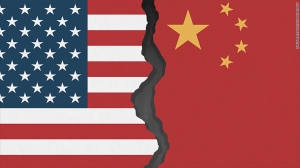


(Posted on 28/09/18)
With the U.S. government’s announcement last week on the imposition of an additional $200 billion in protective trade tariffs against Chinese imports, the American Association of Port Authorities (AAPA) – the unified and recognized voice of America’s seaports – continues to urge the Administration and federal policymakers to consider the negative impacts that tariffs have on port and other trade-related American jobs nationwide, including the effects of retaliatory responses. The new tariffs take effect on September 24, 2018 with the imposition of a 10 percent tariff which will increase to 25 percent by the end of the year.
“The impact of expanding Section 301 tariffs on cargo and equipment moving through American ports is already proving to be significant,” said AAPA President and CEO Kurt Nagle, who testified on Aug. 24 on behalf of the ports association during the U.S. Trade Representative’s Section 301 tariff hearings. “Including the additional $200 billion just imposed, the total Section 301 tariffs on Chinese commodities and China’s response in retaliation responses covers about 10 percent of all trade that moves through America’s ports by value, which is concerning. AAPA was pleased, however, to see that port cranes (tariff line 8426.19) were removed from the list, as we recommended at the recent hearings. Tariffs on these cranes, which cost upwards of $14 million each, would have harmed ports’ ability to make the investments necessary to handle the larger vessels now being used in ocean trade and hurt U.S. international competitiveness.”
“Because trade supports everyone, AAPA is encouraging federal policymakers to work swiftly to restore market certainties and forge paths to expand U.S. exports, rather than create new import restrictions,” he added.
At $4.6 trillion a year, the value of cargo activities at America’s seaports are significant drivers of the U.S. economy, supporting more than 23 million American jobs and generating over $320 billion in annual federal, state and local taxes. All but 1 percent of the nation’s overseas trade moves through its maritime facilities.
During the USTR’s Section 301 hearings in late August, AAPA urged that the multi-million-dollar container cranes that U.S. ports have on order and are considering purchasing from Chinese factories, for which there are no American-made alternatives, be exempt from tariffs. USTR did remove tariff line 8426.19 from the final list so these large cranes are not subject to the newly announced tariffs.
Founded in 1912 and recognized as the unified voice of seaports in the Americas, AAPA today represents 140 of the leading seaport authorities in the United States, Canada, Latin America and the Caribbean and more than 250 sustaining and associate members, firms and individuals with an interest in seaports.
ADM and Mitsubishi Corporation have signed a non-binding memorandum of understanding to form a strategic... Read more
ESL Shipping and global steel manufacturer SSAB have agreed on a multi-year extension of the agreement... Read more
Anglo American’s Sakatti copper and polymetallic project in Finland has been designated as a &... Read more
FEFAC, representing the EU compound feed and premix manufacturers, noted with deep concern the announced... Read more
Catering to the growing demand from India’s confectionery, infant formula, and dairy sectors,... Read more
Khalifa Economic Zones Abu Dhabi – KEZAD Group, the largest operator of integrated and purpose... Read more
Rio Tinto will invest $1.8 billion1 to develop the Brockman Syncline 1 mine project (BS1), extending... Read more
Catherine Cobden, President and CEO of the Canadian Steel Producers Association (CSPA), has released... Read more
Enough domestic ferrous scrap is available for electric arc furnace (EAF) steelmakers to supply nearly... Read more
Cargill’s Ocean Transportation business and leading tanker shipping company, Hafnia, have joined... Read more